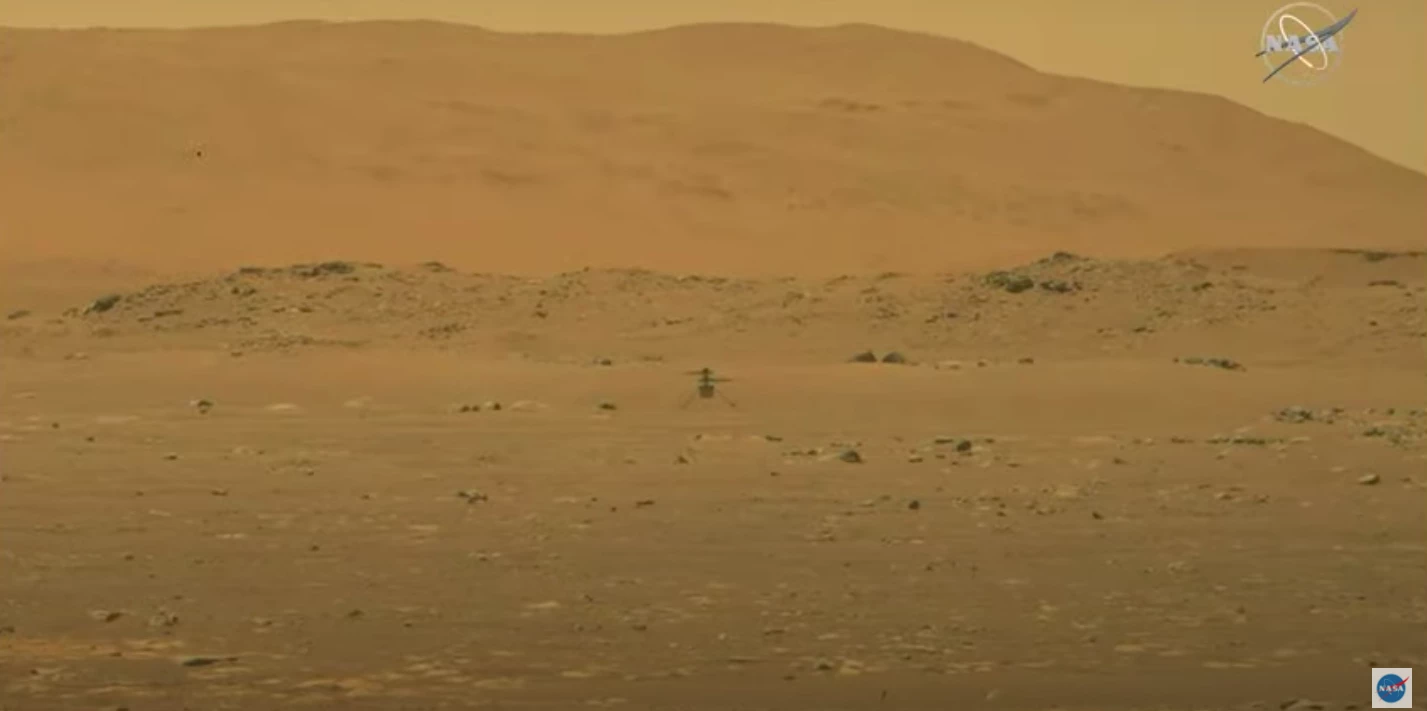NASA has made history today, conducting the very first powered flight on another planet. The Mars Helicopter Ingenuity successfully took to the Red Planet skies for a brief jaunt, which will hopefully be the first of several.
The small drone took off at 3:34 am EDT, climbed to a height of 10 ft (3 m) and hovered above the ground for 30 seconds before safely touching down again. The total flight time was 39.1 seconds. The historic moment was broadcast in a NASA livestream and the video from the Perseverance rover, which looked on from 5 m (16 ft) away, has now been beamed back to Earth:
Flying a drone for a few seconds might not sound like too big an accomplishment, but it’s quite a remarkable feat of engineering. Ingenuity is flying in conditions unlike any possible on Earth – the gravity on Mars is only one-third as strong as Earth’s, and the air is extremely thin, at just one percent the density of our own. Throw in the extreme cold and a lengthy radio delay, and you’ve got a lot that can go wrong.

And it already has. After surviving its first frigid night on Mars, Ingenuity was set to take off on April 11 – but a software error during a high-speed spin test of its rotors on April 9 threw a spanner in the works. After troubleshooting the issue, NASA developed a fix and beamed a software update to the Red Planet.
If all goes to plan, NASA will conduct a few more flights over the next few weeks, sending Ingenuity higher and farther each time.
"Now, 117 years after the Wright brothers succeeded in making the first flight on our planet, NASA’s Ingenuity helicopter has succeeded in performing this amazing feat on another world," says Thomas Zurbuchen, NASA Associate Administrator for Science. "While these two iconic moments in aviation history may be separated by time and 173 million miles of space, they now will forever be linked. As an homage to the two innovative bicycle makers from Dayton, this first of many airfields on other worlds will now be known as Wright Brothers Field, in recognition of the ingenuity and innovation that continue to propel exploration."
Source: NASA






